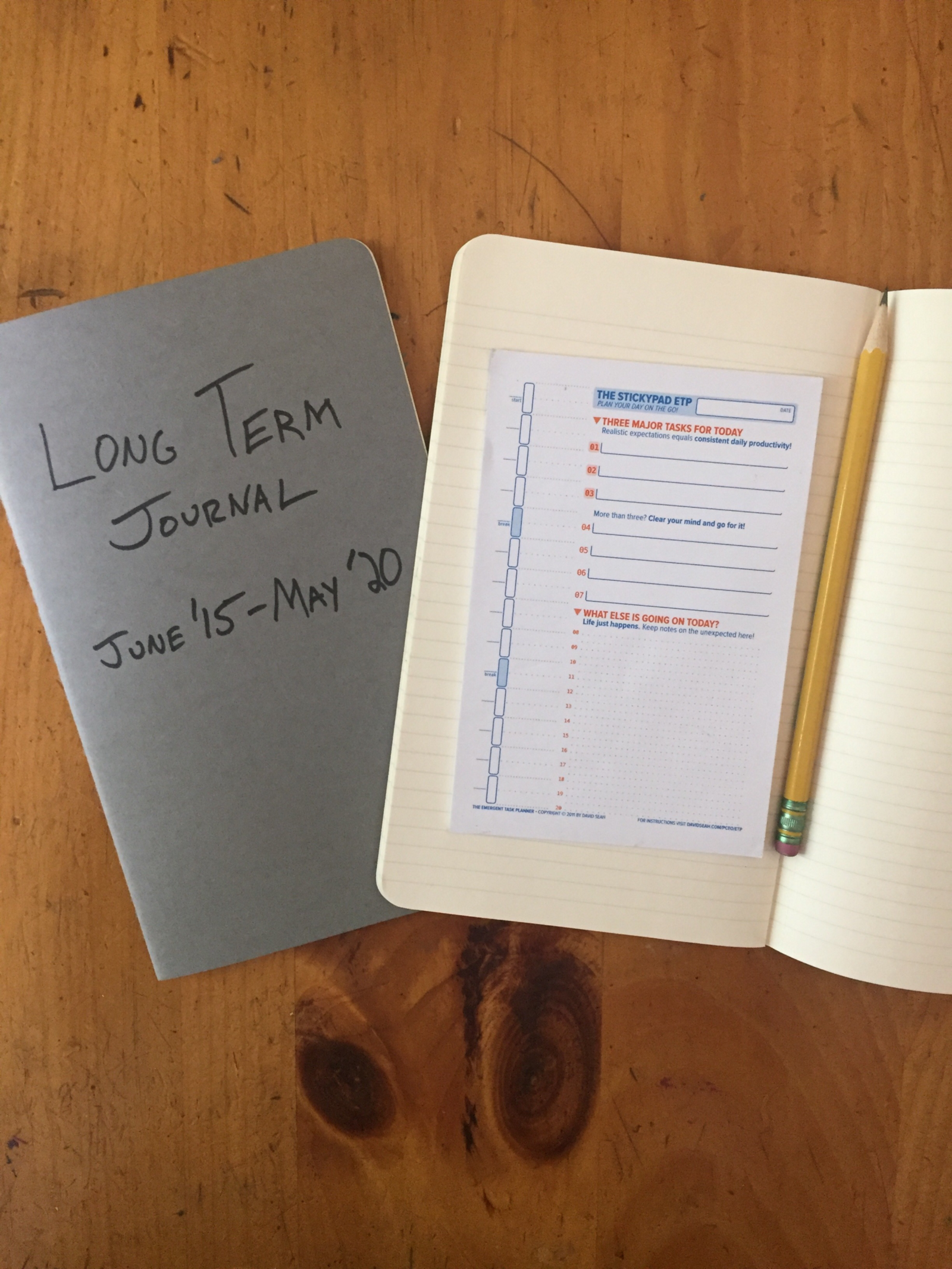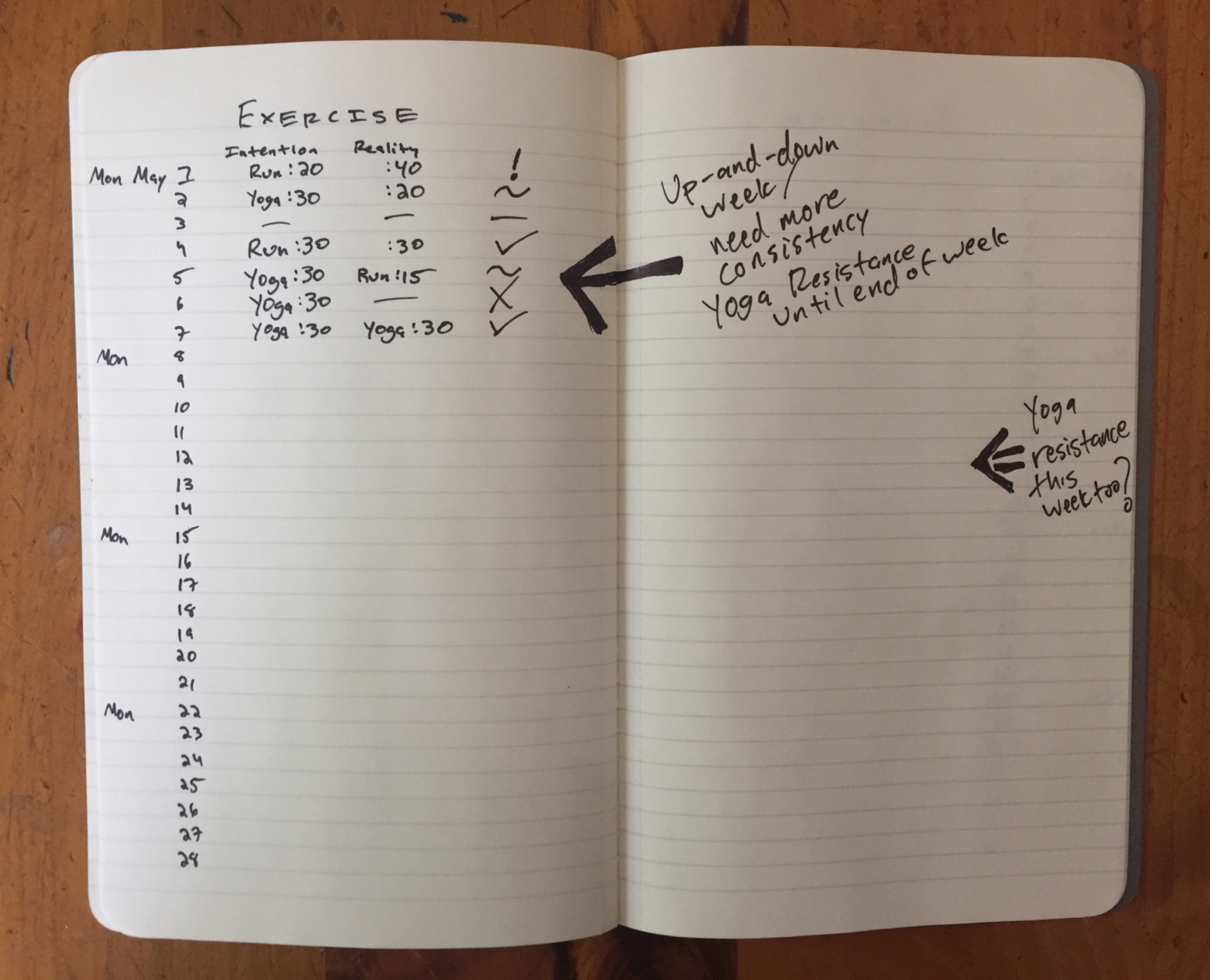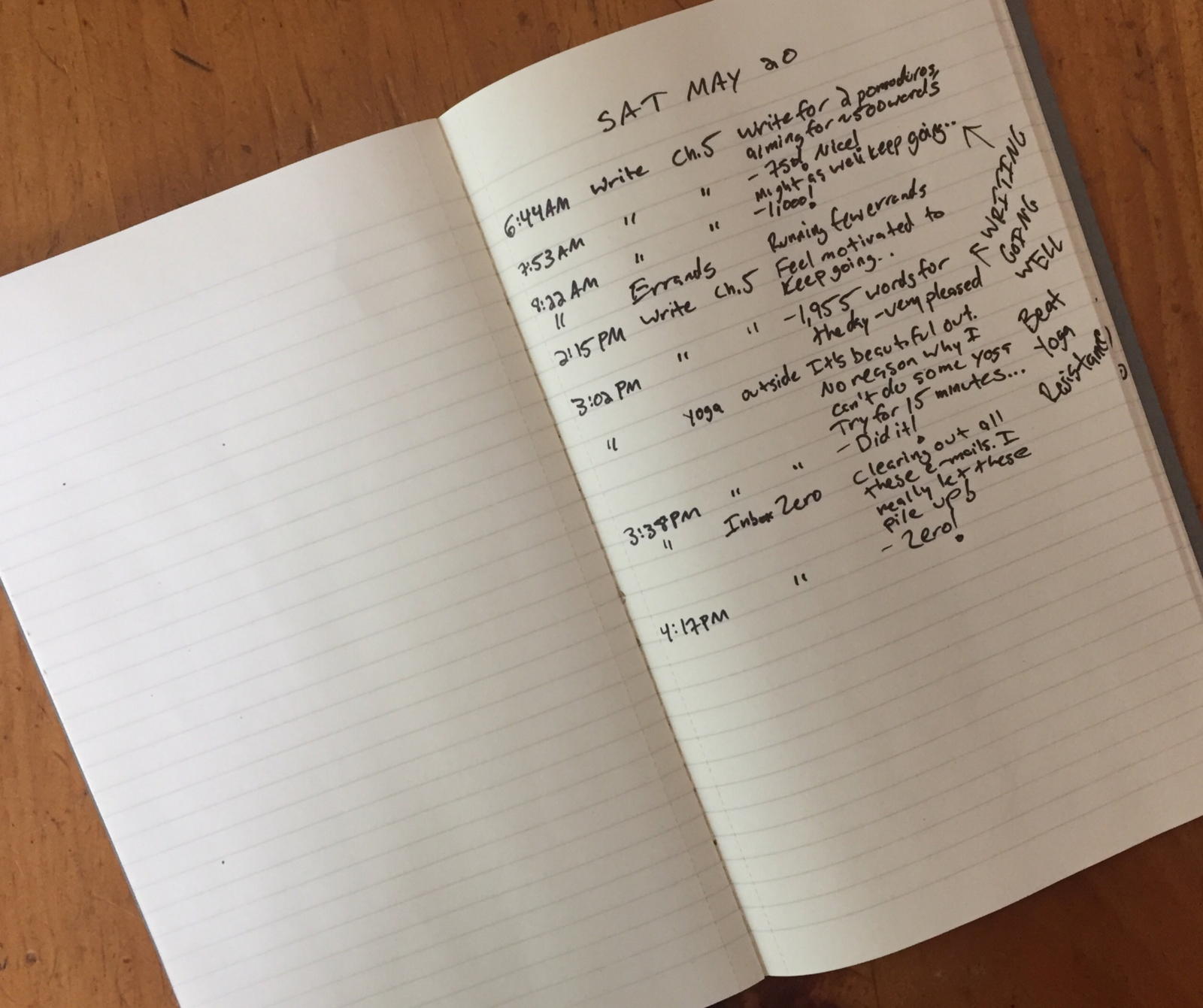The STJ is used day-to-day to devise your weekly and monthly plans of attack and to track your short term progress. By recording your progress along the way, you will be able to make calculated adjustments, allowing yourself to more effectively pursue your long term goals.
Together the LTJ and STJ are a powerful, synergistic combination: LTJs allow for a top-down approach to goal achievement. STJs are bottom-up, providing an “on-the-ground” perspective that a top-down approach cannot see, and allowing for the flexibility that a top-down approach cannot foresee.
If you design your STJ based on your LTJ, and if our LTJ evolves based on the STJ, then the journals serve as a two-way bridge between our short and long term selves.
Purpose
I created this system for two reasons:
- I struggled with task, time, and goal management. Waves of productivity followed by still puddle water, again and again.
- I had a bad habit of switching from one flavor-of-the-month system to another before switching again — the grass is indeed always greener. I spent far too much time getting ready to get things done instead ofactually getting things done.
The system addresses these two problems by allowing me to:
- Manage my tasks, time, and goals on a consistent, long term, and realisticbasis.
- Be both creative and analytical in my pursuit of productivity. If it’s easy, flexible, and (sorta) fun, it won’t produce friction — I’ll use it, reliably.
And I do.
What differentiates this from other systems?
There are two important differences between this system and other journal-based productivity systems.
- Tasks unrelated to your most important goals are nowhere near these journals. Productivity journals are sacred. In them, you will uncover amazing, actionable truths about yourself — this won’t happen if “buy toilet paper” is a few lines up.
- Daily, (relatively) freeform journaling is a critical component of STJs — in fact, most of the pages are dedicated to this habit. It is the cornerstone habit upon which your productivity — task, time, and goal management — is built.
What’s so great about journaling?
Journaling, whether by the method described here or otherwise, has enormous benefits. Equally important, journaling is easy, which means it’s an easy habit to start and stick with. You literally just move your hand around a page or type into your computer. It almost doesn’t even matter what you write or type — it’s just the act that matters.
Perhaps the greatest benefit is journaling ability to help us understand ourmental models and improve our emotional intelligence (EI).The interference of mental models and low EI are the greatest impediments to personal productivity and sound goal management.
Mental models are subconscious thoughts and beliefs that inform how we view the world and how we choose to act within it. They’re invisible, silent angels and devils on our shoulders.
Journaling is among the best ways to examine ourselves on a deeper level and discern the models by which we live.
Emotional intelligence is our ability to recognize emotion in ourselves and others, and use this information effectively.
In walks journaling. By recording events and thoughts, we can learn how to improve both self- and social awareness, and we can better manage our behavior.
In short, journaling makes us more effective and more authentic versions of ourselves.
Tools
When setting up this system, the gatekeeper decision is whether to go digital with a word processor or journal app, or analog with paper and pencil. Both would work fine. Here, I describe my preference (analog), but all of this applies equally.
I use Moleskine’s large Cahier journals for both my monthly STJ and my 5-year LTJ:













